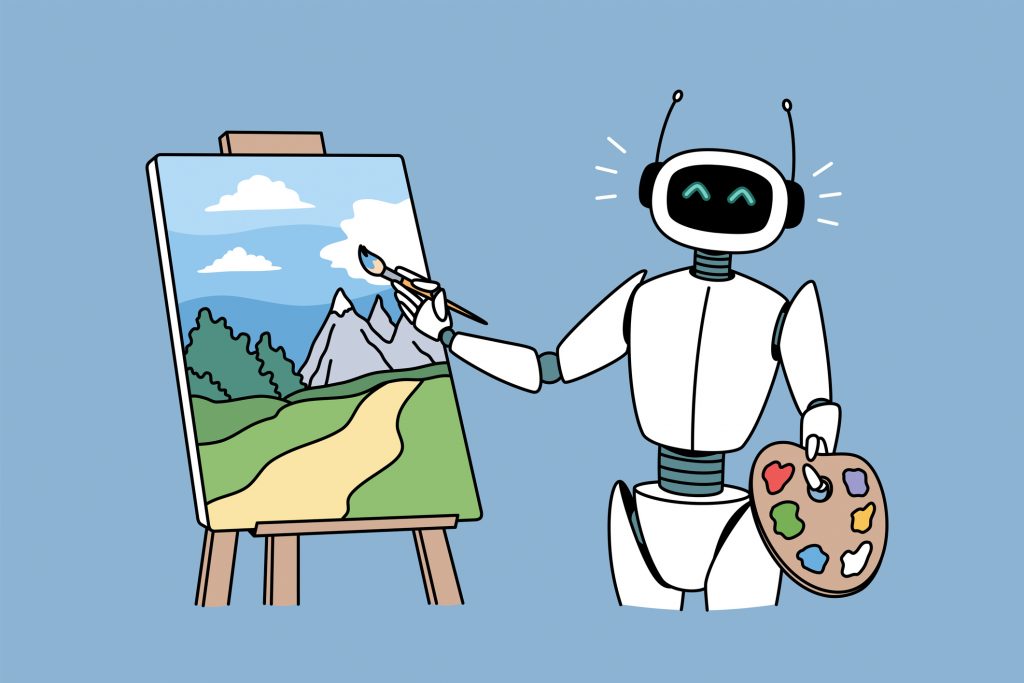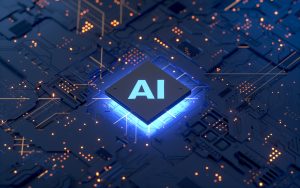AI in Art
AI has been playing an increasingly important role in all fields of life. In the business world, for example, AI is used to automate customer service and financial analysis tasks. This allows businesses to save money and improve efficiency. In the medical field, AI is being used to diagnose diseases and develop new treatments. AI

AI has been playing an increasingly important role in all fields of life. In the business world, for example, AI is used to automate customer service and financial analysis tasks. This allows businesses to save money and improve efficiency.
In the medical field, AI is being used to diagnose diseases and develop new treatments. AI is also being used to create personalized treatment plans for patients. This helps to ensure that patients receive the best possible care.
In the world of education, AI is being used to create new learning tools and personalize instruction for students. This way, students can learn more effectively and efficiently.
Overall, AI is having a profound impact on all aspects of life. It is making us smarter, healthier, and more productive.
But can AI influence, impact, and improve art?
Art is the pure manifestation of human creativity and genius. It has always been something we humans have considered to be innately ours. No other being on this planet can create art! It is the quintessence of our most intimate thoughts, emotions, and passions. Art allows us to express our uniqueness and make our mark in the world in the most original way possible.
So how can AI create art? AI has no feelings or emotions. It’s pure science backed by algorithms, machine learning, and big data. Where does it draw its inspiration? How can AI access the power of muses?
Surprisingly, artificial intelligence has been used to create works of art for many years. Some of the earliest examples date back to the late 1970s when computer-generated artworks began to appear in galleries and museums. In the intervening decades, AI has become increasingly sophisticated, and its capabilities have been used to create more realistic and lifelike artworks.
One of the most remarkable AI-created art is the painting “Portrait of Edmond de Belamy” by the French collective Obvious. The painting was generated by a neural network trained on a dataset of 15,000 portraits. The results are remarkably realistic, and the painting was sold at auction for $432,000.
Other notable examples of AI-created art include the music videos for the songs “Not Afraid” by Eminem and “Halo” by Beyonce, both created using AI software.
Art reinvented by AI
Undoubtedly, AI tools are having a major impact on the art world. For example, they allow artists to create more complex and intricate works than ever. They are also helping artists to experiment with new styles and techniques.
AI tools are also being used to create new types of art. Some artists are using AI to create completely random and unpredictable pieces. This provides artists with a whole new way of expressing themselves.
In 2017, researchers from the University of Creative Arts in London used AI to generate a series of images exhibited at the Tate Modern. The images, created using a Generative Adversarial Network, or GAN, were based on the paintings of the late British artist Francis Bacon.
GANs are a type of AI that can generate new images based on a training set of images. The training set is used to teach the AI how to create unique images similar to the ones in the training set. The AI-generated images from the Tate Modern exhibition were generated by feeding the GAN a series of Bacon paintings.
Also in 2017, Google unveiled its Art Transfer app, which uses machine learning to transform photos into works of art.
Famous artists who use AI as a muse
One of the most impressive examples of AI-created art is the work of Robbie Barrat. Barrat is a 22-year-old artist who uses a neural network to create his art. Barrat trains his neural network on images of classic paintings and then has it generate new images based on what it has learned. The results are often surreal and beautiful and have garnered Barrat a lot of attention from the art world.
One of the most exciting applications of AI in art is in the field of generative art. This is where AI is used to create new works of art based on existing ones. For example, a painting can be fed into an AI system, creating a new artwork based on the original. This process can be repeated indefinitely, meaning that the AI system is effectively creating new works of art that are unique each time.
One artist who is using AI to create generative art is Mario Klingemann. Klingemann has been using AI to create art for over a decade, and his work has been shown in galleries worldwide. He says that AI gives him the ability to “explore the creative potential of [his] materials in ways that would be impossible without it.” Klingemann’s art is often abstract and colourful, and he has even created an AI-generated music video.
Another artist who is using AI to create art is Memo Akten. Akten is a Turkish-born, London-based artist who uses AI to create installations and sculptures. His work often explores the relationship between humans and technology, and he says that AI “adds an extra layer of abstraction” to his work.
And this is just the beginning of AI in art.
One of the most exciting things about AI-created art is that it is constantly evolving. As AI technology gets better and better, we can expect to see even more amazing works of art created by artificial intelligence.
AI tools are also being used to create new types of art. This can be done by using algorithms to generate new images or artificial intelligence to develop new ways of looking at familiar images. For example, some artists are using AI to create entirely random and unpredictable pieces. This provides artists with a whole new way of expressing themselves.
Another way that artificial intelligence can be used in art is to help artists create new art styles. This can be done by using artificial intelligence to develop new ways of painting or by using it to create new ways of sculpting.
In 2017, a team of researchers from the University of Southern California created a sculpture called “Aurora” that was made using an AI. The sculpture was created using a 3D printer and was based on the form of a human face. The USC team used a GAN to generate the 3D model for “Aurora.” The GAN was trained on a dataset of 3D models of human faces.
AI tools are also being used to preserve artworks. Some museums are using AI to scan and digitize their collections. This helps to protect the artwork from damage and decay. For example, the Google Arts & Culture app uses AI to colourize black-and-white photos. This brings new life to old photos and preserves them for future generations.
AI can also be used to improve the viewing experience of artworks. For example, it can enhance the realism of images or create interactive exhibits that allow visitors to explore the works in greater detail.
Artificial intelligence can also be used to create music. There are now artificial intelligence programs that can compose music. This is done by taking a piece of music and then using artificial intelligence to make changes to it, resulting in new and interesting pieces of music.
In 2017, Google’s Magenta project released a song called “Daddy’s Car, ” composed by an AI. The song was created using a long short-term memory, or LSTM, network. LSTM networks are a type of AI that can learn to remember sequences of information.
Overall, AI tools are having a significant impact on the art world. They allow artists to create more complex and exciting works and are helping us to preserve our cultural heritage. With AI’s help and passion, we will find it easier to access our creativity and materialize it into a work of art. How will our world look then? Hopefully, more colourful and more fun!




